What secrets does the ocean still conceal from us?

The ocean has always held a certain mystique, concealing secrets beneath its waves that both intrigue and unsettle us. Over the years, numerous eerie and inexplicable objects have surfaced, leaving witnesses baffled and sparking widespread curiosity. Here are 13 of the most unsettling discoveries ever found floating at sea.
1. The Mummified Sailor Adrift

In 2016, Filipino fishermen stumbled upon a haunting scene off the coast of Mindanao Island in the Philippines: a battered yacht, drifting aimlessly with the mummified body of 59-year-old German sailor Manfred Fritz Bajorat inside, preserved by the dry, salty conditions of the cabin. He was found slumped over a desk, next to his vessel’s radio transmitters. A letter to his late wife was also discovered, expressing his emotional turmoil.
Authorities were able to identify Bajorat through documents on board and determined that he had died of a heart attack, likely weeks before his body was found on February 26, 2016. The yacht had been drifting for an unknown period, and his daughter, Nina revealed that he had been sailing solo since his divorce in 2008 and his wife’s passing in 2010. She also added that he had been an experienced sailor with over half a million nautical miles logged.
2. The Enigmatic Globsters

Throughout history, mysterious, amorphous masses known as “globsters” have washed ashore, baffling scientists and locals alike. These unidentified organic masses often lack visible eyes, defined heads, or apparent bone structures, leading to widespread speculation about their origins. One of the most famous globsters was the Tasmanian Globster, which washed up in 1960 and was initially thought to be a massive sea monster, but was later identified as a decomposed whale carcass in 1962. Other notable examples include the Bermuda Blob 1&2, which washed ashore in 1988/1997, and the Chilean Blob, found in 2003, both of which were later identified as whale remains. However, not all globsters have been explained, and some remain a mystery.
3. Severed Feet in Sneakers
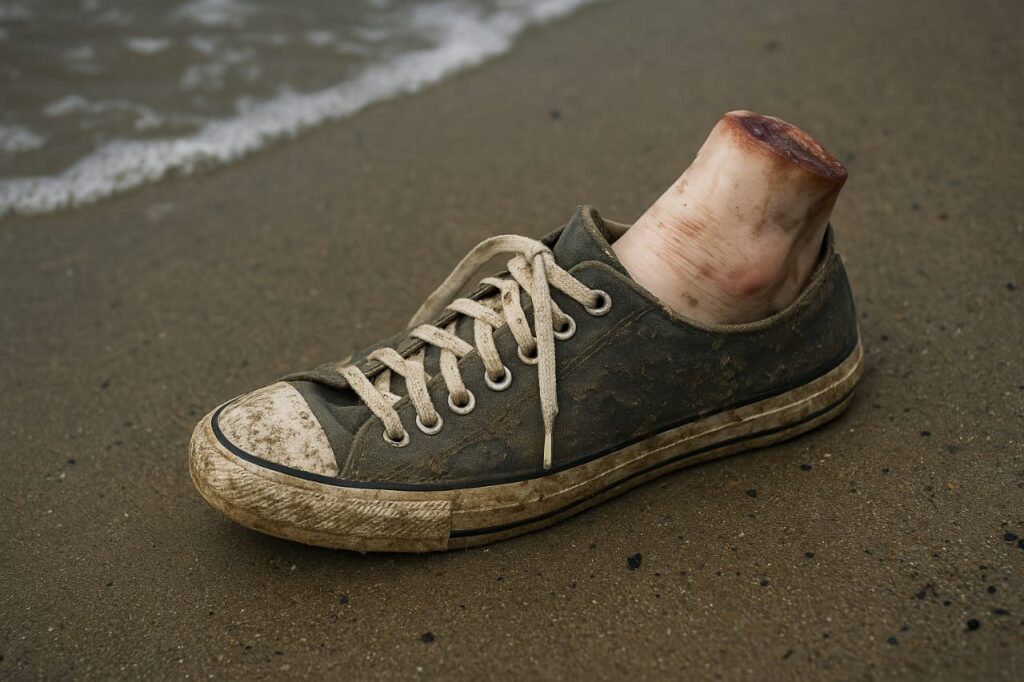
Since 2007, over 20 detached human feet, often encased in sneakers, have been found along the coasts of British Columbia, Canada, and Washington State, USA. The phenomenon has puzzled authorities and the public, sparking widespread media attention. Theories have ranged from natural decomposition processes, where the feet become disarticulated and are carried to shore by ocean currents, to more sinister explanations involving foul play or even tsunami-related trauma.
While many of the feet have been linked to missing persons, including some whose identities were confirmed through DNA analysis, the sheer number and frequency of discoveries continue to raise questions. Some experts have suggested that the prevalence of synthetic materials in modern footwear may contribute to the feet’s ability to float and travel long distances before washing ashore.
4. The Utsuro-Bune Legend

The legend of the Utsuro-bune, a mysterious hollow vessel, dates back to 1803 in Japan. According to accounts from the time, fishermen discovered the strange craft drifting ashore in the Haramachi district of Hitachi Province. The vessel, described as resembling a rice cooking pot or a wooden boat, was said to contain a woman with striking red hair and pale skin, who spoke an unknown language and refused to communicate with the locals.
The mysterious woman was reportedly surrounded by strange objects and windows, adding to the enigma. This ancient tale has since become the subject of folklore and speculation. Others have suggested that the story may be a metaphor for a woman who was an outcast or foreigner. Despite various theories, the true meaning and origins of the Utsuro-bune legend remain unclear.
5. The Spaghetti Monsters of Texas
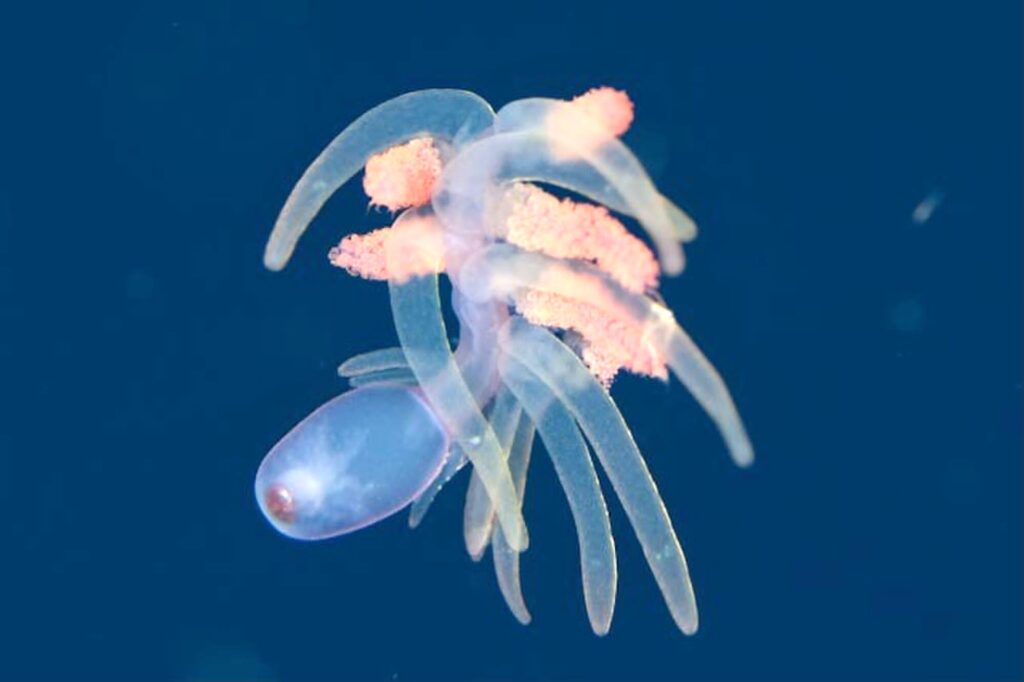
In 2024, beachgoers on Mustang Island, Texas, encountered bizarre, eyeball-like creatures with trailing tentacles, nicknamed “spaghetti monsters.” These organisms were identified as Rhizophysa eysenhardti, a type of siphonophore related to the Portuguese man o’ war. Siphonophores are complex, colonial creatures composed of many specialized zooids that work together to form a single functioning organism. They also possess painful stings and are rarely seen near shore, making the Mustang Island sightings unusual.
According to experts, siphonophore typically inhabit deeper waters in the Gulf of Mexico, and strong winds or currents may have pushed them toward the shore. Beachgoers were warned to exercise caution, as the stings from these creatures can cause painful welts and other systemic reactions.
6. The Skeleton-Like Sea Creature
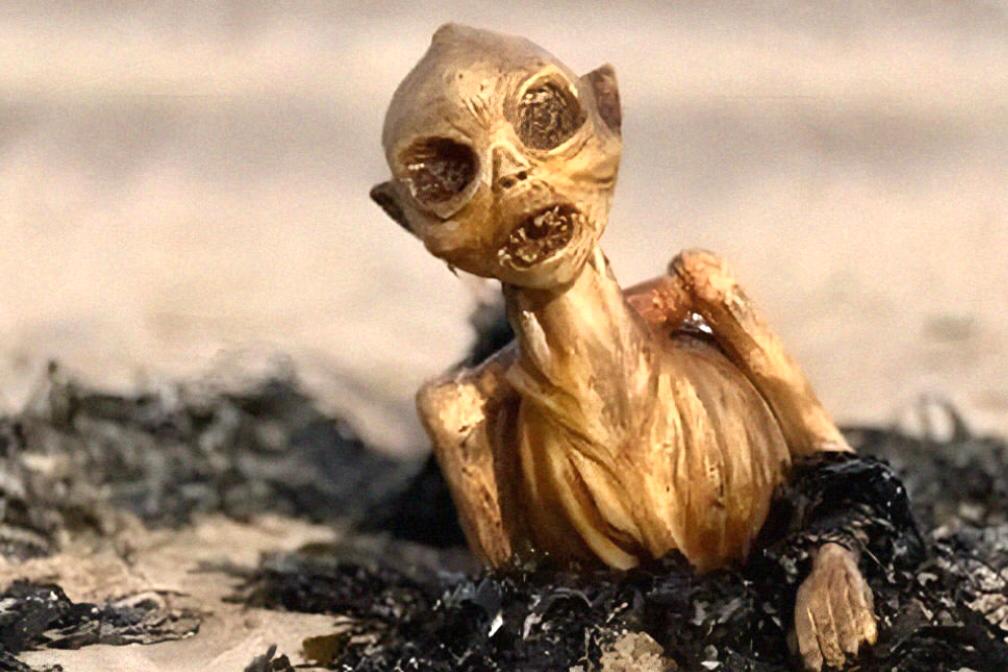
In March 2025, beachgoers in Margate, UK, were startled to discover a mysterious, skeleton-like figure with fins washed ashore. The creature’s gaunt head, emaciated body, and scaled fishtail sparked widespread speculation, with some likening it to a mermaid-like entity or a ship’s figurehead. Despite examinations and investigations, the true nature and origin of the bizarre figure remain unidentified.
7. The Deep-Sea Jellyfish

In 2016, researchers exploring the Mariana Trench, the deepest point in the ocean, discovered a mesmerizing jellyfish with a translucent, bell-shaped body and glowing red and yellow internal structures. Belonging to the genus Crossota, this jellyfish was spotted during a deep-sea expedition led by the National Oceanic and Atmospheric Administration (NOAA) and captured on video using a remotely operated vehicle (ROV).
The footage revealed the jellyfish’s striking appearance, with its glowing internal organs visible through its transparent body. This discovery highlighted a large portion of the ocean still remains unexplored, and unique creatures will continue to be discovered.
8. The Bobbit Worm
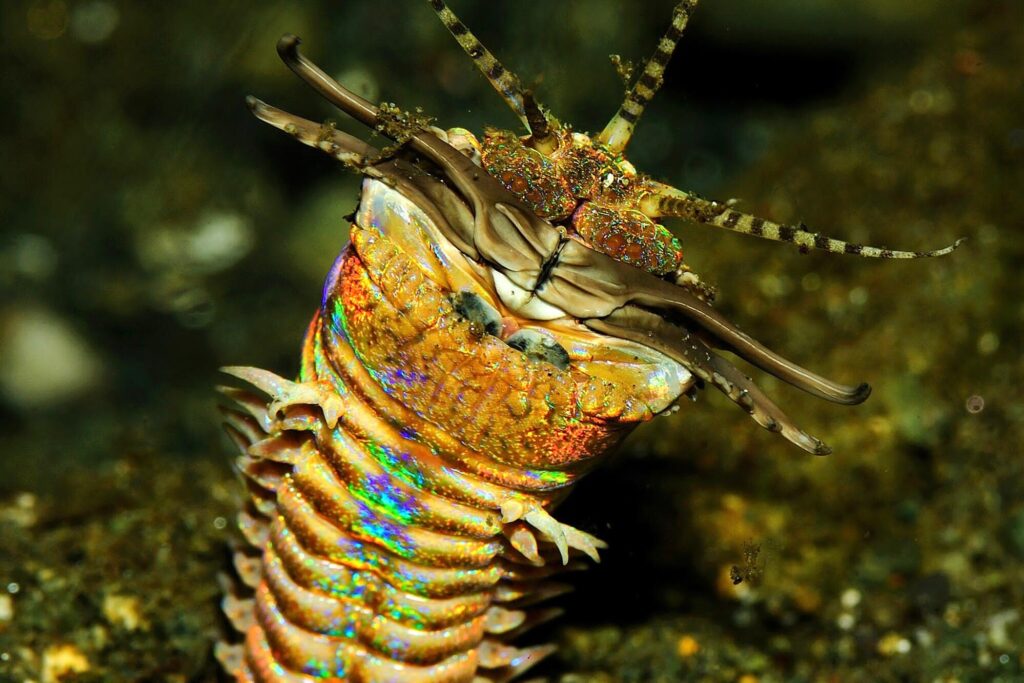
Lurking beneath the ocean floor, the Bobbit worm (Eunice aphroditois) is a predatory polychaete worm known for its ambush tactics and powerful jaws capable of snapping prey in half. Growing up to 10 feet long. These skilled hunters, use their sensitive antennae to detect vibrations and movements in the water, then striking with lightning-fast speed to capture their prey.
They are usually found in tropical and subtropical waters around the world, often burrowing into the seafloor and lying in wait for unsuspecting fish, crustaceans, and other invertebrates. Lately, they have been detected ashore, often hiding in holes of large rocks, which are also popular among aquarium enthusiasts and used as decor, or they can hide inside the substrate at the bottom of an aquarium. By the time people realise there is a Bobbit worm in their tank, it might be too late.
9. The Floating Deadheads

Fishermen in the Aleutian Islands have reported encounters with “deadheads,” submerged logs that float vertically with only a small portion visible above water. These hidden hazards have been known to damage boats and pose significant risks to maritime navigation. Deadheads are often the result of logging activities, where logs break free from log booms or are swept into the ocean by rivers.
As they become waterlogged, they can sink to a point where only a small portion remains above the surface, making them nearly invisible to boaters. The impact of striking a deadhead can be catastrophic, causing hull damage, loss of propulsion, or even capsizing. As a result, mariners and fishermen in the region exercise extreme caution, and efforts are made to track and remove these hazards to ensure safe navigation.
10. The Baltic Sea Anomaly
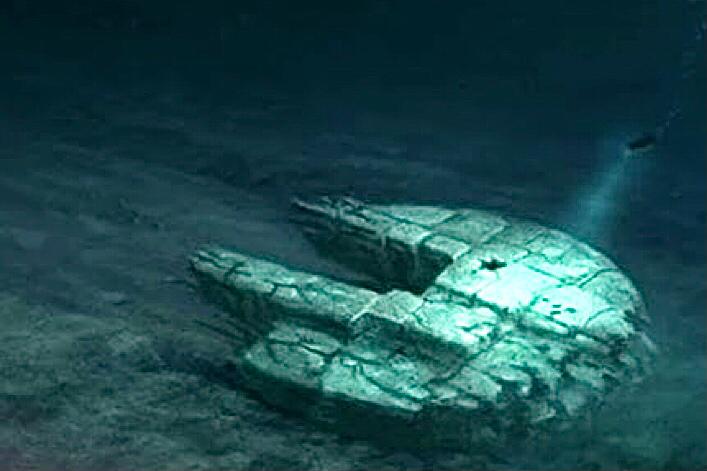
In 2011, a Swedish diving team known as Ocean X found a peculiar formation on the floor of the northern Baltic Sea. The sonar image revealed a circular object measuring about 60 meters in diameter. This discovery, dubbed the “Baltic Sea Anomaly,” sparked widespread speculation, with theories of a sunken UFO ship.
However, experts like Volker Brüchert, an associate professor of geology at Stockholm University, analyzed samples from the site and concluded that the materials were typical of glacial deposits, suggesting a natural geological formation.
11. The Pantelleria Vecchia Bank Megalith
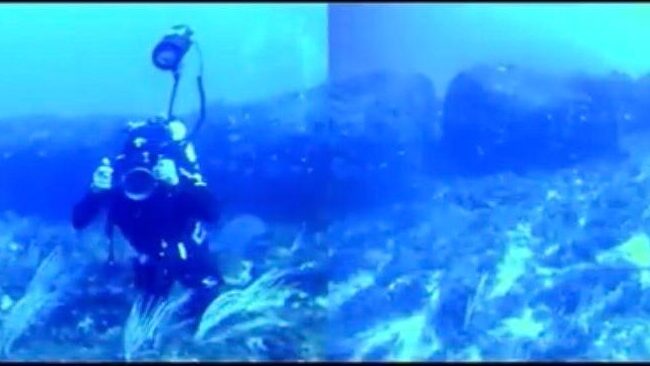
In 2015, researchers discovered a massive stone structure submerged at a depth of 40 meters between Sicily and Tunisia. This megalith, measuring 12 meters in length and weighing approximately 15 tons, features three holes of similar diameter, one of which extends completely through the stone. Radiocarbon dating of shell fragments within the stone suggests it was carved around 10,000 years ago, during the early Mesolithic period. The structure’s purpose remains unknown, but its discovery indicates that prehistoric human activity occurred in areas now submerged by the Mediterranean Sea.
12. The Unsettling Tale of the Montauk Monster

Back in July 2008, a peculiar creature washed ashore near the business district of Montauk, New York, sparking widespread speculation and intrigue. The carcass, with its hairless, leathery skin, beak-like snout, and elongated limbs, defied easy classification. Photographs of the creature quickly circulated online, leading to a tons of theories about its origin.
Some speculated it was a mutated experiment from the nearby Plum Island Animal Disease Center, while others believed it to be a decomposed raccoon or a new, undiscovered species. Experts ultimately determined that the corpse was that of a raccoon, its body severely deteriorated from being in the water.
This story, 12 of the Creepiest Things Ever Found Floating at Sea was first published on DailyFetch


